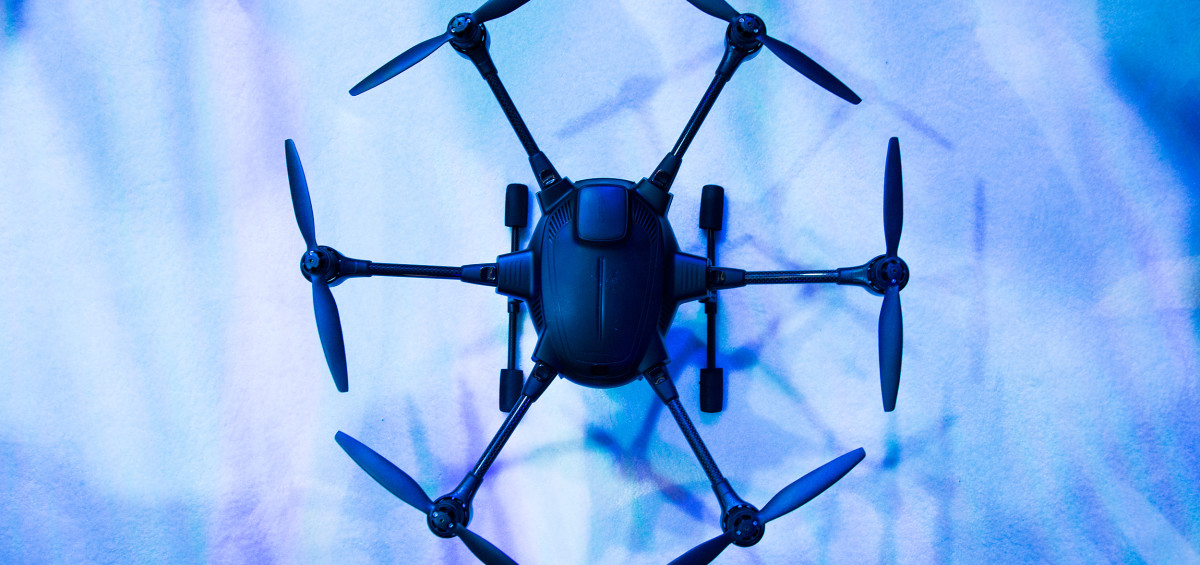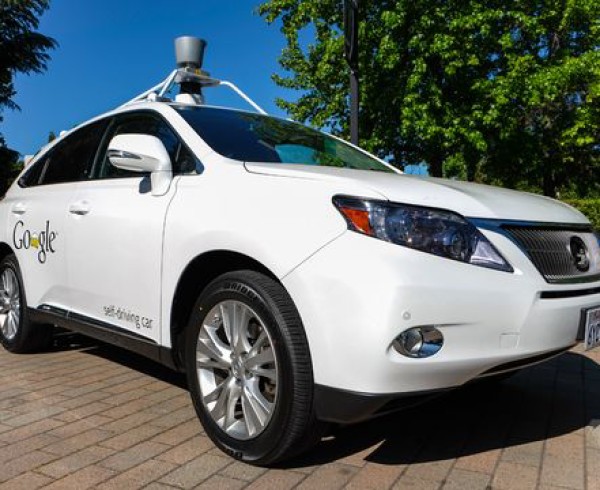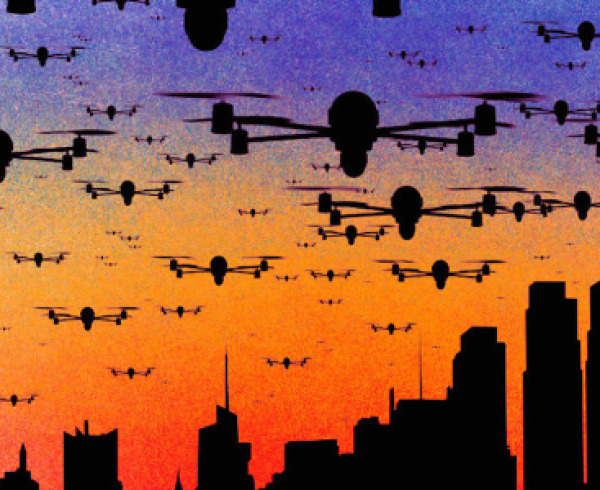Author: Brian Barrett
Original Source: http://www.wired.com/2016/01/drones-arent-just-toys-anymore/#slide-1
Two years ago, maybe three, you’d be hard-pressed to find this many distinct quadcoptors on the entire show floor, much less under one banner. In 2016, there are tons. Parrot’s got company.
Over the past year, our flying machines have become capable of doing more than just taking pictures of weekend getaways and sick runs on your mountain bike. Thanks to affordable hardware from manufacturing in China and elsewhere (but mostly China), making a stable, simple-to-fly drone is easy. The next step is figuring out what that drone should do. Quite a few companies, armed with multiple rotors and smartphone apps, claim to see the path forward.
DJI is here. They’re the one you’ve heard of, that have teamed up with everyone from Ford to Iron Man to bring quadcopters into the mainstream. Autel Robotics brought its X Star Go and X Star Premium and its fixed-wing Kestrel prototype. They all also take pictures from the air. Ehang is showing off the Ghost drone, a consumer flyer with its own Twitter account, alongside the bluntly named Commercial Drone Series V.1. These take pictures too. The star of this year’s show, though, does something different: The EHang 184 is a drone that can pilot a human passenger. In other words, a flying car.
Let’s keep going! Fleye, a Kickstarter drone hopeful, looks like a salad spinner. There’s a submarine drone. It’s called Sea Wolf and looks like a bloated metallic guppy.
The drones have proliferated to the point that they are repeating themselves. Zerotech, the first company with access to Qualcomm’s drone-friendly system on a chip, is demonstrating its “smart drone turnkey solution.” From its booth on the show floor, you can see Xiro, a company that sells the same hardware under a different (yet phonetically quite similar!) name.
There are countless demonstrations, each staged inside ropey cages, where marketing lackeys and engineers pilot tight and well-worn flight paths with remote controls or smartphones.
The drones have taken over. Now what?

Drone Home
While the full taxonomy of drones has become overwhelming to think about, the expansion has come steadily.
“The growth has actually been the same for the last three years in this particular industry,” says Gartner analyst Gerald Van Hoy. There’s no consumer drone inflection point, no single explosion of product. It’s an old story, really. Volume breeds efficiency. Efficiency breeds cost savings. If factories in Shenzhen can turn out millions of hoverboards in a matter of weeks, imagine what they can do with a few years of quadcoptors under their conveyor belts.
“There are a lot of people out there who can make the hardware, the flying portion of the device,” says Intel CEO Brian Krzanich, whose company recently purchased German drone manufacturer Ascending Technologies. “That’s not that hard. You can go to China, go all over the world, and get it built at low cost.”
In that sense, a particular type of drone, the kind you value mostly as an aerial camera, has become very quickly commoditized. In some industries, that’s a short road to ennui. But a funny thing has happened now that anyone can make a drone. Instead of boredom, we got experimentation.
“It’s kind of a Wild West, where the market’s unestablished,” says Van Hoy. “There’s a lot of turnover, which is a good thing, because it means there’s a lot of innovation going on.” Not all ideas are good ones. Not all drone startups survive. The important thing is that they’re trying. Experimentation abounds.
That’s taken some genuinely exciting forms. A company called Yuneec put one of Intel’s RealSense 3-D cameras inside a drone, and that drone can now dart around falling trees—without any human intervention—like Luke hightailing his speeder bike through the forests of Endor. It’s also bred some silliness; a company called ByRobot sells “drone fighters,” which can blast each other with invisible infrared “missiles” in midair.
“Just like any other new technology, you put it in the hands of people and they’re inventing new use types,” says Intel’s Krzanich. “Industrial people are starting to take them out of toys, or things you play with, and starting to see that there are real industrial applications.”
Of which there are many! Herd management. Inspecting cell towers and gas pipelines. Or think smaller, literally; contractors could use microdrones to check if your chimney is cracked. A claims adjuster could use one to assess damage, or the extent of destruction in a disaster zone. Those aren’t just speculative arrangements; a Zerotech representative says the company is already in discussions with an insurance company.

The Drone Horizon
Easier access to hardware also invites a broader range of participants. Autel Robotics? They’re a newish division of an automotive diagnostics company of the same name. Easy hardware availability makes drones an easy play for Autel, because all that’s left are sensors and software.
“I look at drones as simply a platform for sensors,” says Van Hoy. “When you take away all of the bells and whistles that you see in a show like this, the bottom line is that you just need to get your sensors to wherever they need to be to do the job that has to be done. Cars, ground drones, underwater robots; they’re all pretty much cousins.”
This is also, for what it’s worth, why Intel bought its drone company. It doesn’t want to compete directly with DJI’s hardware. It just wants to better understand how a drone’s brain should work.
“If you really start thinking about drones going beyond following you on a mountain bike, and talk about wanting to inspect thousand-acre farms, or go 500 miles, then you’ve got to start having very complex, very advanced navigation systems,” says Krzanich. “You have to have very advanced software and hardware.” The kind engineers worked on tirelessly at Ascending Technologies. The kind those people will now work on for Intel.
As for what they’ll be working on? The applications Krzanich mentioned above, sure. But what’s most surprising—and exciting—about the advent of the drone age is that there’s so much room left to grow.
“Whenever you talk about this stuff there’s this giant cliff out there, which is regulation,” says Van Hoy. More specifically, the lack thereof. The US hasn’t officially settled on rules for how drones are operated yet (though it’s close), to say nothing of an international standard. For companies that operate globally, that’s a huge barrier to even considering the incorporation of drones to their daily routines.
“There’s a whole flood of enterprises out there that haven’t even come through the door yet,” says Van Hoy. Some companies, most notably Amazon, are charging ahead anyway, under the assumption that the laws will work themselves out. Not everyone can afford to be Amazon, though. Once companies know for sure when and how drones are allowed to operate, they’ll start finding ways drones can make their lives easier. And, more often than not, your life.
For now, there’s Parrot. And Autel. And DJI. And Microwings. And Fleye. And Ehang. And Yuneec. And ByRobot. And Xerotech. And Xiro. And dozens more alongside them. If that’s just for starters. Just imagine what happens when drones really take off.








